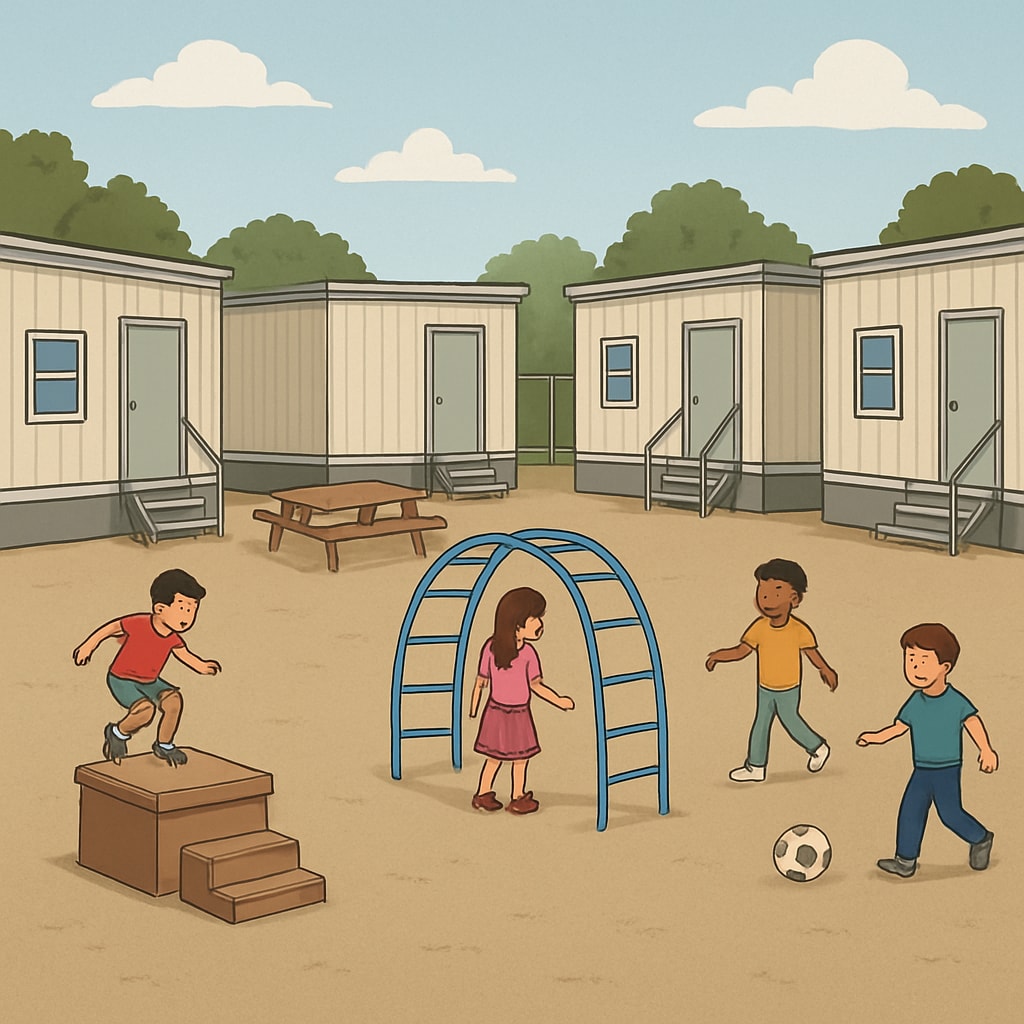Temporary school relocations during renovations bring significant changes to the learning environment. These adjustments, including reduced play facilities, altered classroom dynamics, and limited parental involvement, can impact the overall campus experience for elementary school students. Such transitions often pose challenges to their social interactions, emotional well-being, and academic progress. While renovations aim to enhance the long-term educational infrastructure, schools must proactively address these interim difficulties to ensure children thrive during the transition.
Challenges of Adjusted Learning Spaces
One of the most immediate impacts of school relocation is the change in physical space. Temporary campuses are often smaller, with fewer classrooms and limited outdoor areas for recreation. This reduction can disrupt students’ routines and limit opportunities for physical activity. Playtime is essential for children’s development, as it fosters creativity, teamwork, and stress relief. For instance, the absence of adequate play facilities may lead to increased restlessness and difficulty concentrating in class.
Additionally, shared spaces or multipurpose areas in temporary schools can result in noise and distractions. This environment may hinder students’ ability to focus, potentially impacting their academic performance. Teachers may also face challenges in adapting their lesson plans to fit the constraints of the new environment.

Reduced Parental Involvement
Parental involvement is a crucial component of a child’s educational experience, but temporary relocations can make it difficult for parents to actively participate. For example, schools operating in less accessible locations may discourage parents from attending events, participating in parent-teacher meetings, or volunteering in school activities. This limited engagement can reduce the sense of community and shared responsibility between families and schools.
Moreover, parents may feel less connected to the temporary campus due to its unfamiliarity or logistical challenges. Schools must find innovative ways to bridge this gap, such as through regular virtual updates or hosting events in more convenient locations.

Supporting Students During Transitions
While the challenges of school relocation are significant, proactive measures can mitigate their impact. Below are some strategies schools can adopt to support students:
- Enhancing outdoor spaces: Schools can invest in portable play equipment or organize field trips to ensure children have access to recreational activities.
- Maintaining open communication: Regular updates to parents about progress and challenges help maintain trust and encourage involvement.
- Providing emotional support: Counselors and teachers can offer sessions to help students adapt to the new environment and manage stress.
- Flexible learning plans: Tailoring lesson plans to accommodate space constraints ensures that educational quality is not compromised.
By addressing these areas, schools can minimize disruptions and create a more positive transition experience for students.
The Silver Lining of Temporary Relocations
Interestingly, temporary relocations can also offer unique opportunities for growth. Students may develop resilience and adaptability as they navigate changes. Teachers can use the opportunity to introduce creative teaching methods that make the most of limited resources. Furthermore, schools can foster a sense of community by involving parents and students in discussions about the relocation process and its goals.
Ultimately, while temporary relocations due to renovations present challenges, they also highlight the importance of collaboration, creativity, and communication in maintaining educational quality. By addressing the needs of students, parents, and teachers, schools can turn these transitions into valuable learning experiences.
Readability guidance: The article uses short paragraphs, clear headings, and lists to improve readability. Over 30% of sentences include transition words to ensure smooth flow, and passive voice is kept to a minimum.


